
🍣Natto maki (納豆巻き) – Fermented Soybean Roll Sushi
Whak kind of dish is Natto Roll Sushi (Natto maki)?
Natto roll sushi is called natto maki in Japanese. Maki zushi is sushi rice and natto wrapped in nori seaweed.
Natto Roll Sushi (Natto maki)
A type of traditional Japanese Maki Zushi (rolled sushi). It consists of sushi rice and natto wrapped in nori seaweed, prepared in a cylindrical shape.
Popular among health-conscious individuals due to high nutritional value (protein, vitamin K, dietary fiber, etc.) and ease of consumption (available in convenience stores and supermarkets).
Types of Sushi Rolls
| Hosomaki Thin Sushi Rolls | Made by cutting a sheet of nori in half. Natto rolls sold commercially are generally of this type. |
| Futomaki Thick Sushi Rolls | Made using a whole sheet of nori seaweed. Sushi rolls are made with a variety of ingredients, such as cucumber, imitation crab (kanikama), rolled omelet (tamagoyaki), dried gourd strips (kanpyo), and sashimi. |
| Gunkan Sushi Battleship Rolls | Oval-shaped sushi rice wrapped with a band of nori, with toppings (like natto, tuna, egg yolk, mentaiko, kimchi, etc.) placed on top. A good alternative if a makisu is unavailable. You can find Gunkanmaki with surprisingly unconventional toppings, including corn mayonnaise salad, hamburger, and wagyu steak. It is highly versatile and allows for a unique Japanese-Western fusion. |
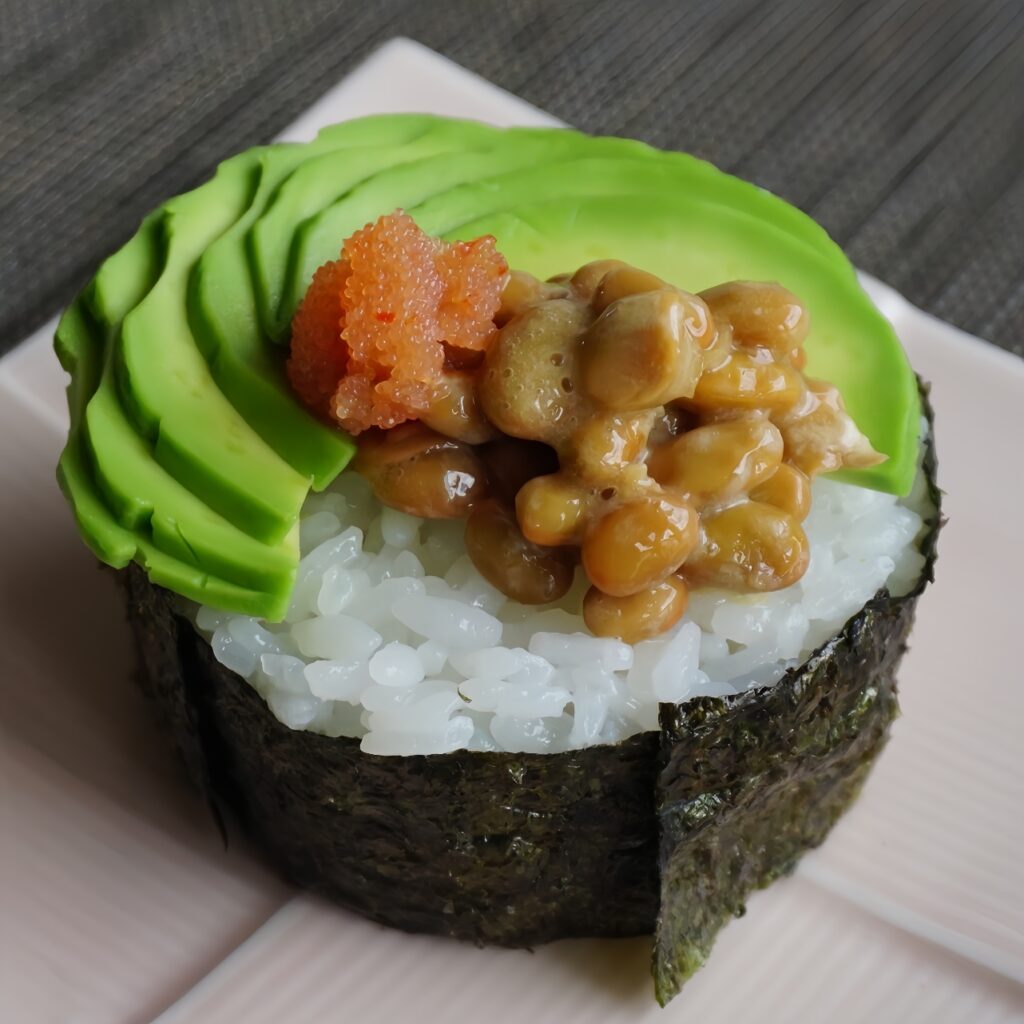
🔪 Essential Tools for Rolling
Makisu (Bamboo Mat) 巻き簾(竹製のすだれ)
- Material & Use: A kitchen utensil made from thin bamboo strips, primarily used for rolling sushi.
- Other Uses: Effective for squeezing excess water out of blanched vegetables.
- Note: Always dry completely after washing to prevent mold.
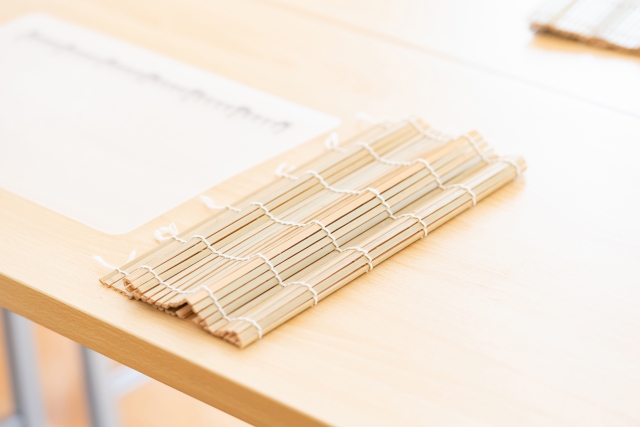
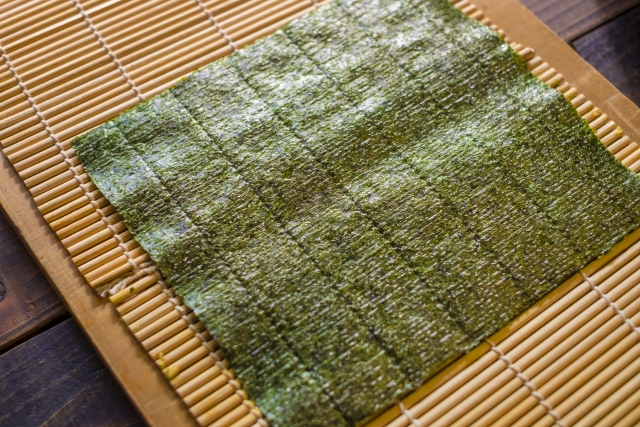
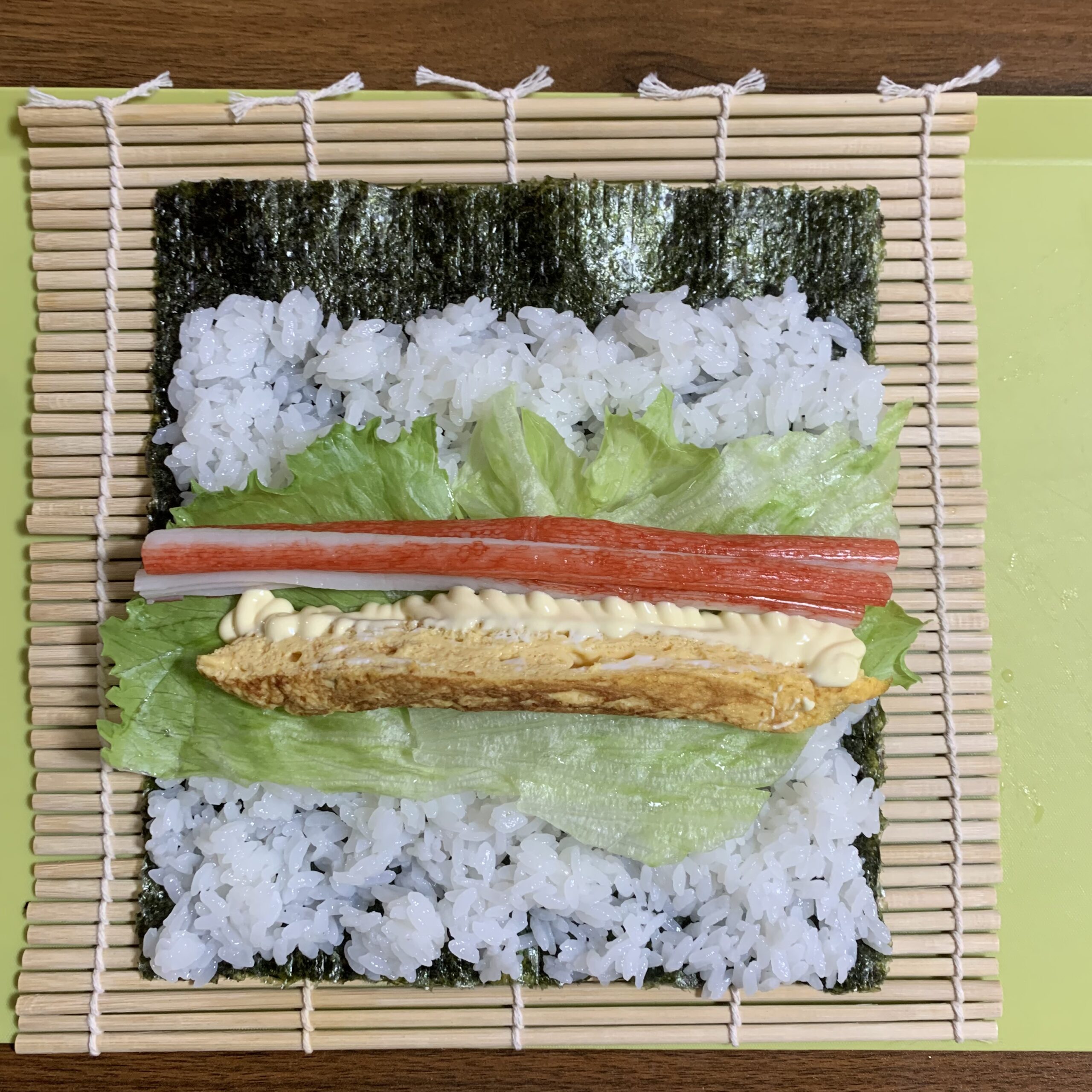
🔪 Sushi Nori (Nori seaweed sheet)
| Product Specs | Roasted seaweed product. Generally sold in packs of 10 sheets, measuring approximately 20 cm square. |
| Size | Full Size: Standard for sushi rolls. Hangiri: A full sheet cut in half, often used for hosomaki and temaki sushi. |
| Characteristics | The shiny side is the outside of the sushi; the rough side is the inside. Place the sushi rice on the rough side to make rolling easier. |
| Flavor | Characterized solely by its natural seaweed aroma and fragrant aroma (fire aroma) achieved through careful roasting, maximizing the delicate flavor of the sushi. |
Note on Natto
Natto is a traditional Japanese food known for its distinctive aroma, strong stickiness, low calories, high protein, and rich dietary fiber.
| Natto Type | Description | Key Characteristic |
| Large/Small-grain | Made by fermenting steamed whole soybeans. | Standard form. |
| Hikiwari Natto | Made by crushing soybeans and removing the skins before fermentation. | Higher Vitamin K content; easier to digest due to increased surface area. |
- It is common to use Hikiwari natto for Natto Maki, but any preferred type (like small-grain natto) can be used.
- Hikiwari natto has a larger surface area, allowing more natto bacteria to adhere to it than standard natto. This results in a higher vitamin K content. Also, because the skin has been removed, it is easier to digest.
- Natto becomes very sticky when stirred. I don’t like it to be too sticky, but it is said that stirring natto about 100 times helps to efficiently absorb nattokinase, which improves blood flow.
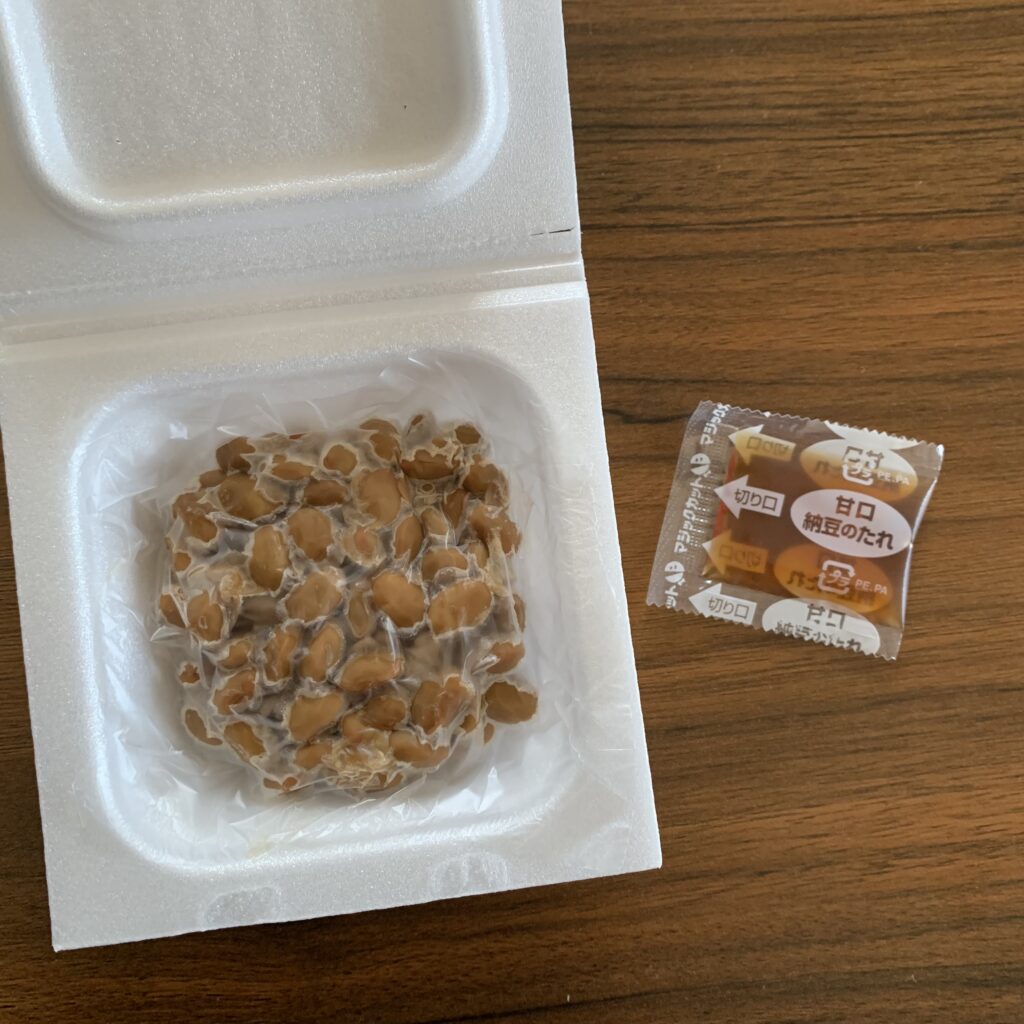
Appeal and Customization
I personally love natto, and on a holiday morning, I find it blissful to eat freshly cooked white rice topped with natto and an egg yolk.
Strangely enough, I develop a strong craving for natto rolls after drinking alcohol (though not many people may agree with this). I especially love adding very sour umeboshi, made by my grandmother, into the natto maki I buy from the convenience store.
Natto rolls are often eaten dipped in soy sauce.
Depending on the mood, they may also be garnished with wasabi, green onions, shiso leaves, cucumber, takuan (pickled radish), cheese, or mayonnaise.
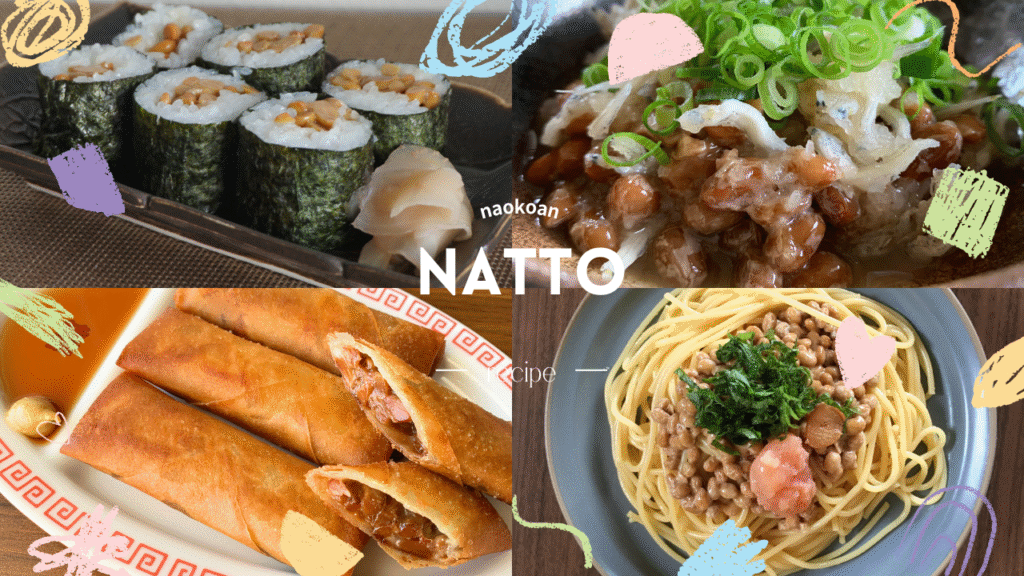
📊 NUTRITION FACTS: Natto Roll Sushi (Natto Maki)

Total Nutrition Value (Natto Maki)
| Component | Amount |
| Calories | 1414 Calories |
| Protein | 37.4 g |
| Total Fat | 10.3 g |
| Total Carbohydrates | 294.1 g |
| Sodium | 3.6 g |
Total Nutrition Value Per 100g of Natto
| Component | Amount |
| Calories | 184 Calories |
| Protein | 16.5 g |
| Total Fat | 10.0 g |
| Total Carbohydrates | 12.1 g |
| Dietary Fiber | 9.5 g |
| Sodium | 0 g |
👨🍳 Natto Roll Sushi INGREDIENTS (Recipe for 4 Rolls)
| Ingredient | Amount |
| Steamed Rice | 800 g (Cooked 320g of raw rice. Use 380-450g of water.) |
| Rice Vinegar | 60 g |
| Sugar | 30 g |
| Salt | 3 g |
| Kotsubu Natto | 200 g |
| Nori Seaweed Sheets | 4 sheets (19×19 cm) |
About the amount of sushi vinegar
The proportion of seasonings used in sushi rice varies greatly. The official Mizkan website suggests a ratio of 5:4:1 for vinegar to sugar to salt (100g vinegar, 80g sugar, and 20g salt per 1kg of steamed rice). 👉 https://www.mizkanchef.com/ja/ハウツー/寿司飯の作り方/
👨🍳 Natto Roll Sushi Cooking Instructions (Recipe for 4 Rolls)
- Cook the Rice: Wash the rice (320g) and cook it with water (380–450g) in a rice cooker.
- Mix the Vinegar: Mix the cooked rice with vinegar, sugar, and salt. (It is better to put these seasonings in a heat-resistant container and heat them in the microwave for about 20 seconds before mixing with the rice. This method makes the vinegar’s acidity milder and the sugar easier to dissolve.)
- Lay the Nori: Place a nori sheet on the bamboo mat, shiny side facing down.
- Spread the Rice: Spread the sushi rice over the nori seaweed, covering about 2/3 of the surface area from the front edge. When making sushi, using a Shamoji (rice scoop) instead of a spoon is recommended because the rice grains don’t stick together as easily.
- Prepare the Natto: Mix the natto with the accompanying sauce.
- Place the Filling: Scoop up about 2 heaping tablespoons of natto and lay it horizontally on top of the rice.
- Roll: Roll it up from the front. If you press too hard, the rice grains will be crushed, or the natto will spill out. If you press too lightly, the shape will be lost. Try to use light pressure when rolling.
- Cut: Wait for about 5 minutes for the nori to soften, then cut the roll into 6 equal pieces to finish.
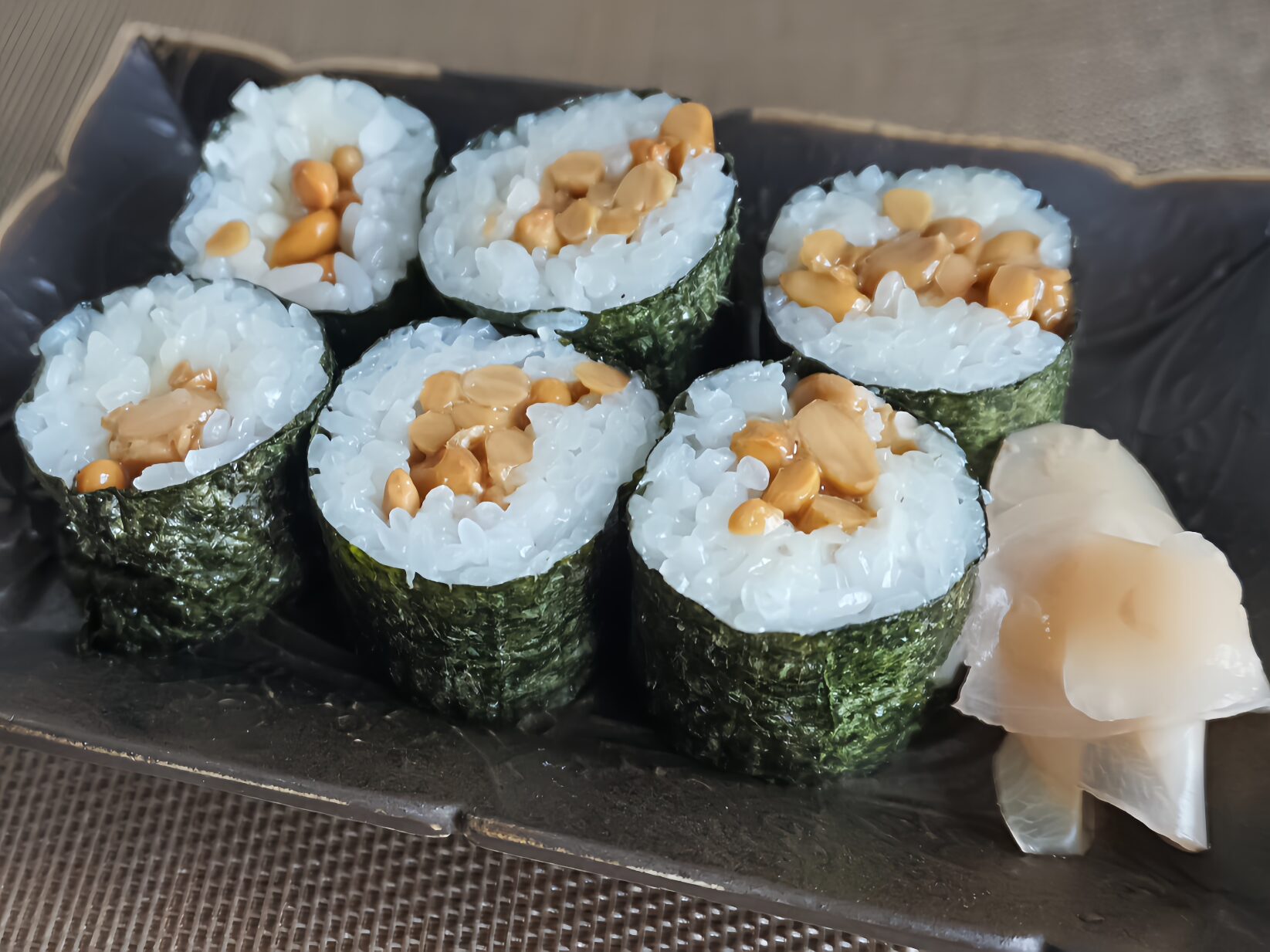


コメント